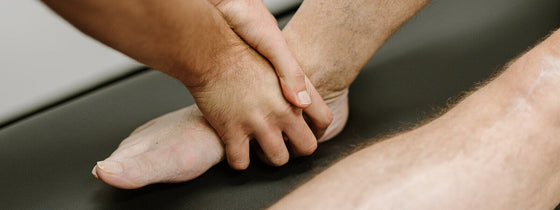Here at OHL, we often have people presenting with shoulder pain, neck/arm stiffness and a loss of shoulder joint function. It is a common issue faced by many people, but why? What is wrong and how can you fix it? And how do we differentiate whether arthritis is involved?
The shoulder joint is a complex structure, with many factors involved to keep it strong, stable and useful. It is comprised of the upper arm bone (humerus), collar bone (clavicle) and the shoulder blade (scapula). When injury occurs, the shoulder can be extremely painful and often results in loss of strength in the rotator cuff and surrounding muscles. Because of this reduction in strength, the shoulder is highly susceptible to injury, dysfunction, dislocation and instability.
There are many reasons for a person to have shoulder pain and today we are going to look at Osteoarthritis (OA). OA is common in many joints of the body and often does not require treatment with many people still living normal and healthy lives. Previous trauma, injury or fracture are all causes of OA as well as previous surgery, rotator cuff repairs and an unstable joint. Unfortunately, the shoulder is the third most common large joint to suffer from OA, behind the hip and knee. Osteoarthritis occurs because of progressive loss of the lining of the joints, called cartilage. With time, this degradation begins to affect the bone and as it progresses, people experience pain, dysfunction in the joint and difficulty participating in activities of daily living, sports and work.
Patients suffering from shoulder OA often present with pain during activity, night pain, difficulty sleeping, stiffness and swelling in and/or around the shoulder. Generally, the pain experienced occurs due to friction between the humerus and where it connects to the scapula. This is because the surfaces are not as smooth as they once were and don’t move as cohesively.
The good news is that if this is affecting you and your life we can help! In order for our team of physiotherapists to diagnose your shoulder OA, we will start by getting a thorough understanding of your history, doing an assessment of your shoulder pain, range of motion and strength to eliminate any other possible reasons for pain. If required, an Xray can help to diagnose OA and distinguish the level and severity.
Management options for shoulder OA are dependent largely on severity. Where possible we try to avoid invasive procedure and opting for a period of physiotherapy treatment first. Conservative treatment involves physiotherapist prescribed exercise-based therapies to strengthen and improve control of the rotator cuff and the entire shoulder. This can be performed in the home environment, a gym or in our group physiotherapy classes. Accompanying this, manual therapy and dry needling by our physios or Myotherapist as required can help to relieve pain and symptoms. Often prescribed by a GP or Orthopaedic surgeon, anti-inflammatory medications can also aid in reducing pain and inflammation.
If conservative management does not work and patients are still struggling with pain and loss of function in their shoulder, a shoulder replacement may be required. This is a fairly common operation, with 23,000 shoulder replacements performed annually. There are many different types of shoulder replacement that can be performed- these are best guided by your orthopaedic surgeon. They include a total shoulder replacement, partial shoulder replacement (hemiarthroplasty) or a reverse total shoulder replacement, just to name a few.
Following these surgeries and replacements, an extensive rehabilitation process is required in order to protect the shoulder in the initial stages and alter, commence movement and strengthen the shoulder. This allows our patients to get back to doing what they love and activities in their daily life with no pain. Our physiotherapists are highly trained in this rehabilitation process and will guide you through every step of the way.
If you or someone you know is suffering from shoulder pain, is requiring or has recently undergone a shoulder replacement, please get into contact with our OHL team. Our expert team of physiotherapists and allied health professionals would love to help guide you through the pre-habilitation and rehabilitation process to get your back to your optimal health!

If you're experiencing back or neck pain with neurological signs and symptoms, a thorough neurological examination is crucial for accurate assessment and effective treatment. In this Optimal Tip learn more about what we mean by completing a neurological exam!

Squats, deadlifts, and calf raises are key movement patterns that should be part of every strength and conditioning program—regardless of age and activity level. These functional movements support joint health, improve posture and balance, and reduce the risk of injury while building strength where it matters most.

A ganglion cyst is a fluid-filled swelling that typically forms over a joint or tendon sheath, causing discomfort and pain, especially when pressing against nerves or joints. Proper assessment and treatment, including physiotherapy, are essential for managing symptoms and improving function in the presence of a ganglion in your hand, foot, or wrist.